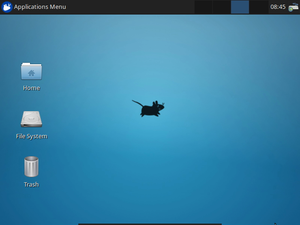Little did I expect what would happen when coding the Sound of Sorting demo program. The initial motivation was to create a program that counts the number of comparisons of sorting algorithms, so that the students in our lecture "Algorithms 1" could compare the results of theoretical analysis and real implementations. There were many programs similar to the one I finally made, but there was no program in which the sorting algorithms were easily readable, and not entwined with visualization code. I needed the third-year students to see "simple" code and at the same time have comparison counting and nice visualizations. And none of the existing programs highlighted the internal workings of the algorithms well.
These were the initial goals what became the Sound of Sorting. The program itself took only about seven days of coding work, which was done from the 17th to 21st of May this year. The program had to be finished for the lecture on the 22nd, so there was a hard deadline to meet. The videos were created on the following weekends, and additional algorithms were added later.
Adding sound effects was very much an afterthought, because I had done some similar work previously with manipulating waveforms. Thus there was no learning curve to overcome to have comparisons play sounds. What kind of sound to play, however, needed a lot of artistic touch, trial and error, and the ability to map and transform frequency, oscillators and envelopes as needed. Forming, mixing and bending sound waves as done in the Sound of Sorting requires a mathematical mindset and some appropriate background.
The by-product of this demo program for teaching sort algorithms was the YouTube video "15 Sorting Algorithms in 6 Minutes" which, to my great surprise, went viral on social networks and was viewed 420.000 times to-date. I'm glad that many people with otherwise no connections to algorithmics find this video interesting, and hope that those with further interest view the slower videos, which provide more insight into the algorithms.
Today, the video infected the front page of my current employer: the Department of Informatics at the Karlsruhe Institute of Technology (KIT), which is of course whom I originally made the demo program for. The text, which I wrote for that occasion, can be viewed in German at the original news article about the viral video (or in the screenshots below). I have translated it into English below, since it contains some further comments about the video.












